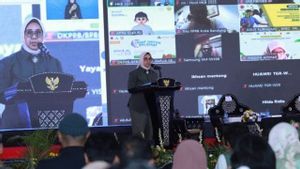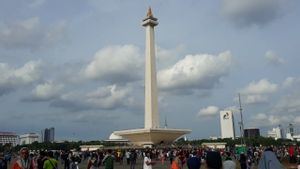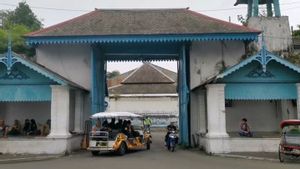JAKARTA - The Election Supervisory Agency (Bawaslu) has found that the synchronization process for the 2020 Pilkada voter lists carried out by the General Election Commission (KPU) is not yet accurate.
Synchronization in this case is the process of checking and checking to ensure that all people who have the right to become voters and can exercise their voting rights on polling day.
In the verification stage, KPU voter data updating officers (PPDP) visit voters from house to house to update and register voters based on the A-KWK model document or polling station-based list (TPS).
The voter list in the A-KWK model is taken from the 2019 Election voter list and the list of potential election voters (DP4) for the 2020 simultaneous regional elections.
The synchronization results resulted in a voter list in the Model A-KWK Voters List by adding first-time voters who were 17 years old on election day, removing voters who did not meet the requirements (TMS) in the 2019 Election.
Then, adding voters to the special voter list (DPK) for the 2019 Election, adding voters who are not 17 but married, and identifying the number of voters in one TPS.
In his supervision, Bawaslu member Rahmat Bagja said his staff had found 328,024 new voters in 235 districts / cities who were not registered in the A-KWK model voter list.
"Second, 805,856 voters were found in 204 regencies / cities who had been declared TMS in the 2019 Election but were still registered in the A-KWK model voter list," said Bagja in his statement, quoted on Friday, August 7.
Then, it was found that 3,331 voters who were not yet 17 years old were married in 142 districts / cities who were not registered in the A-KWK model voter list.
"In addition, there are 66,041 voters in the 2019 Election DPK in 111 districts / cities who are not registered in the A-KWK model voter list. Also found 182 districts / cities where voters have separate TPS," he added.
Thus, Bagja concluded several things. First, the synchronization process does not include the most recent population data, namely residents aged 17 years and less than 17 years old who are married.
"This is evidenced by the existence of novice voters and residents who are not yet married for 17 years who are not registered in the Model A-KWK Voters List," he said.
Second, the synchronization process did not produce an accurate voter list, in which the A-KWK model list still included voters who were declared TMS and did not include voters in the 2019 Election DPK.
Third, the voter list of the A-KWK model has not met the requirements for forming voters in one TPS and has not met the requirements for the convenience of voters, it is found that it has not met the principle of one family voting in the same TPS.
"This proves that the preparation of the number of voters per TPS in the 2020 simultaneous election was not arranged optimally based on the A-KWK voter list," concluded Bagja.
The English, Chinese, Japanese, Arabic, and French versions are automatically generated by the AI. So there may still be inaccuracies in translating, please always see Indonesian as our main language. (system supported by DigitalSiber.id)













